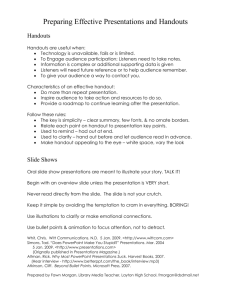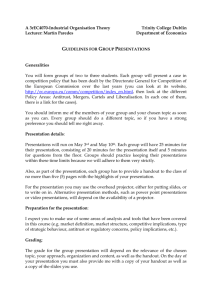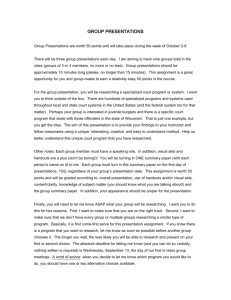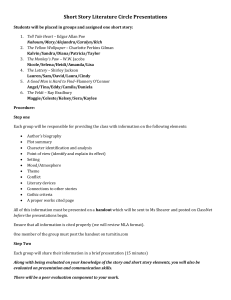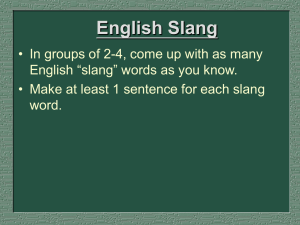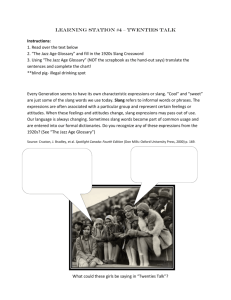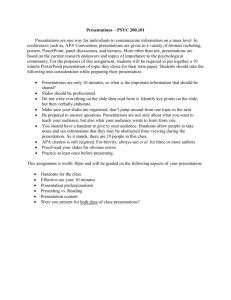Lesson 10 - Presentation Preparation
advertisement
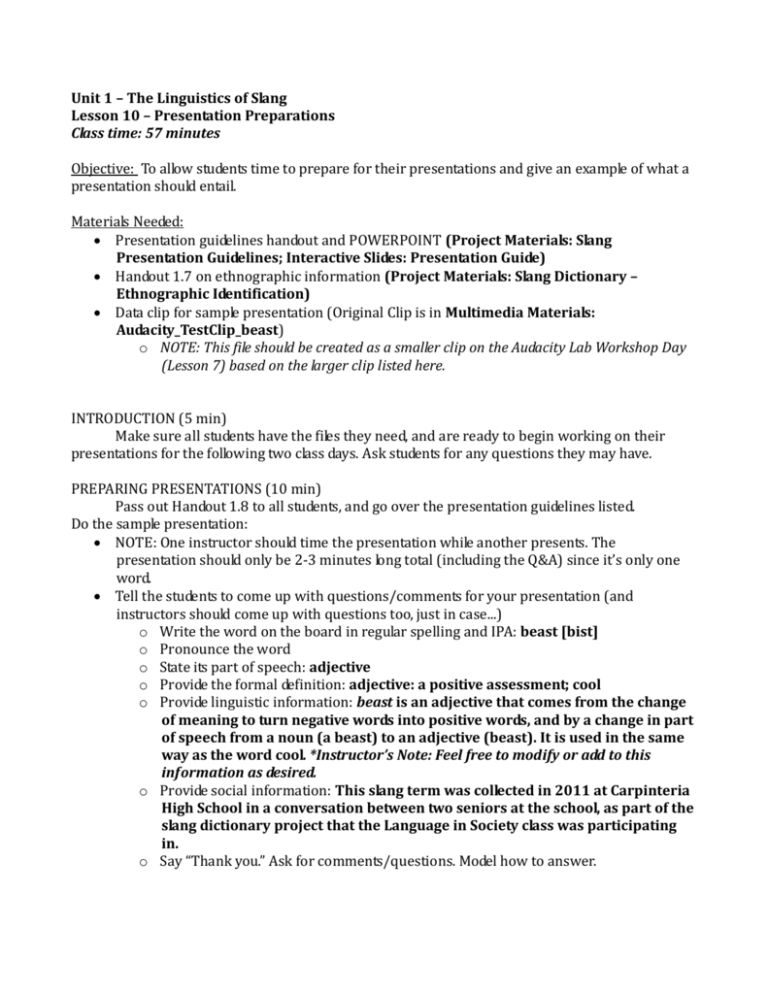
Unit 1 – The Linguistics of Slang Lesson 10 – Presentation Preparations Class time: 57 minutes Objective: To allow students time to prepare for their presentations and give an example of what a presentation should entail. Materials Needed: Presentation guidelines handout and POWERPOINT (Project Materials: Slang Presentation Guidelines; Interactive Slides: Presentation Guide) Handout 1.7 on ethnographic information (Project Materials: Slang Dictionary – Ethnographic Identification) Data clip for sample presentation (Original Clip is in Multimedia Materials: Audacity_TestClip_beast) o NOTE: This file should be created as a smaller clip on the Audacity Lab Workshop Day (Lesson 7) based on the larger clip listed here. INTRODUCTION (5 min) Make sure all students have the files they need, and are ready to begin working on their presentations for the following two class days. Ask students for any questions they may have. PREPARING PRESENTATIONS (10 min) Pass out Handout 1.8 to all students, and go over the presentation guidelines listed. Do the sample presentation: NOTE: One instructor should time the presentation while another presents. The presentation should only be 2-3 minutes long total (including the Q&A) since it’s only one word. Tell the students to come up with questions/comments for your presentation (and instructors should come up with questions too, just in case...) o Write the word on the board in regular spelling and IPA: beast [bist] o Pronounce the word o State its part of speech: adjective o Provide the formal definition: adjective: a positive assessment; cool o Provide linguistic information: beast is an adjective that comes from the change of meaning to turn negative words into positive words, and by a change in part of speech from a noun (a beast) to an adjective (beast). It is used in the same way as the word cool. *Instructor’s Note: Feel free to modify or add to this information as desired. o Provide social information: This slang term was collected in 2011 at Carpinteria High School in a conversation between two seniors at the school, as part of the slang dictionary project that the Language in Society class was participating in. o Say “Thank you.” Ask for comments/questions. Model how to answer. 2 PRESENTATION SIGN-UPS (5 min) Have students sign up for a presentation day/time for the following two class periods. (tell them that those who do it early will be given a bit more leeway than those who present later, to motivate them to sign up for the first day). Half of the students should present on each day. If there are more students than will fit on two class days, reserve time on the following day (slated for evaluations) to finish the remaining presentations. INDIVIDUAL WORK TIME (40 min) Students still working on their data analysis handouts (1.5) or their ethnographic info handouts (1.6) should continue working on them and turn them in. Note that 1.5 should either be PRINTED legibly or typed up, with the IPA written by hand (since we need to enter the data into the online dictionary). Students who are done with their handouts should prepare their presentations.
